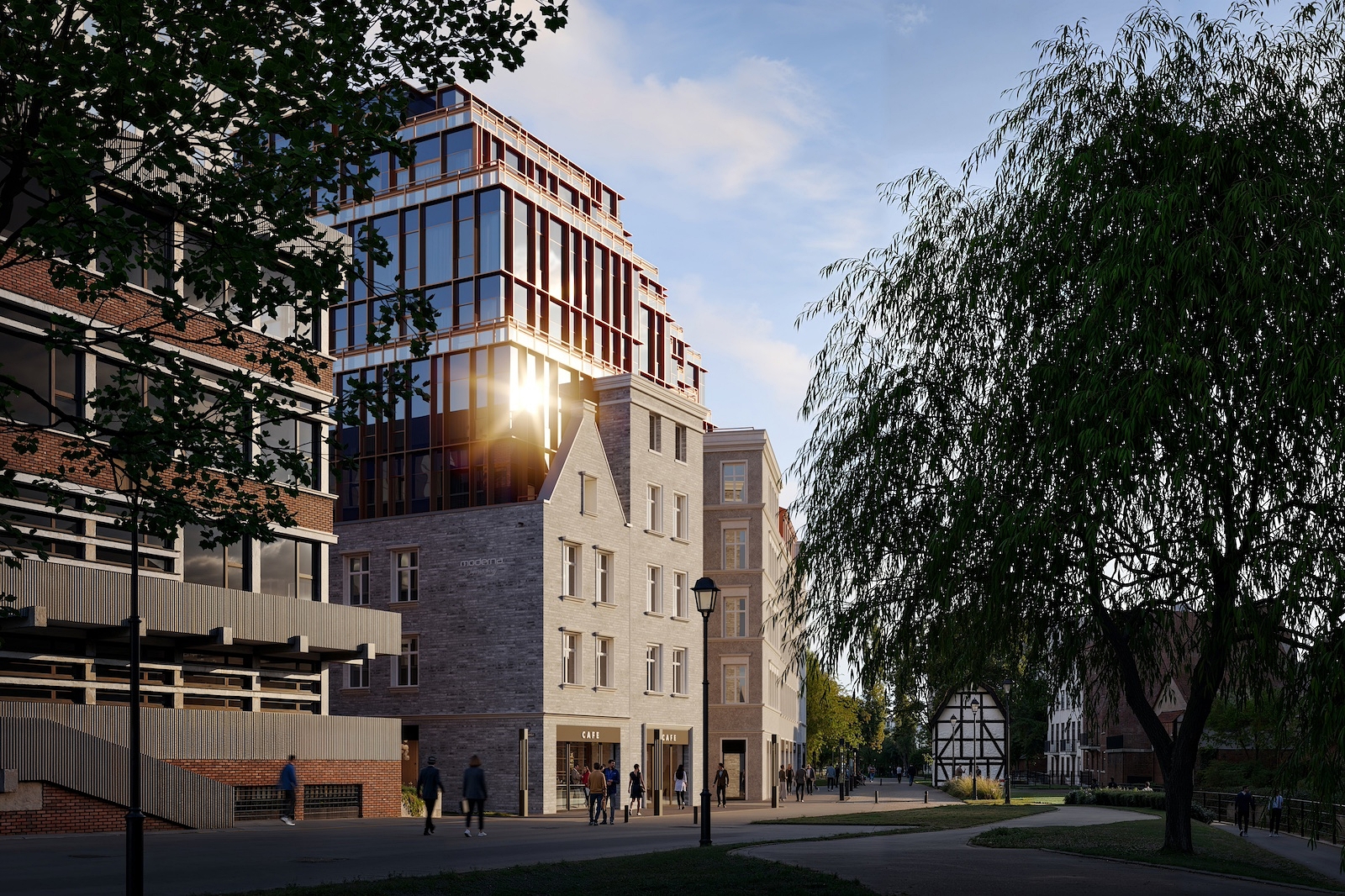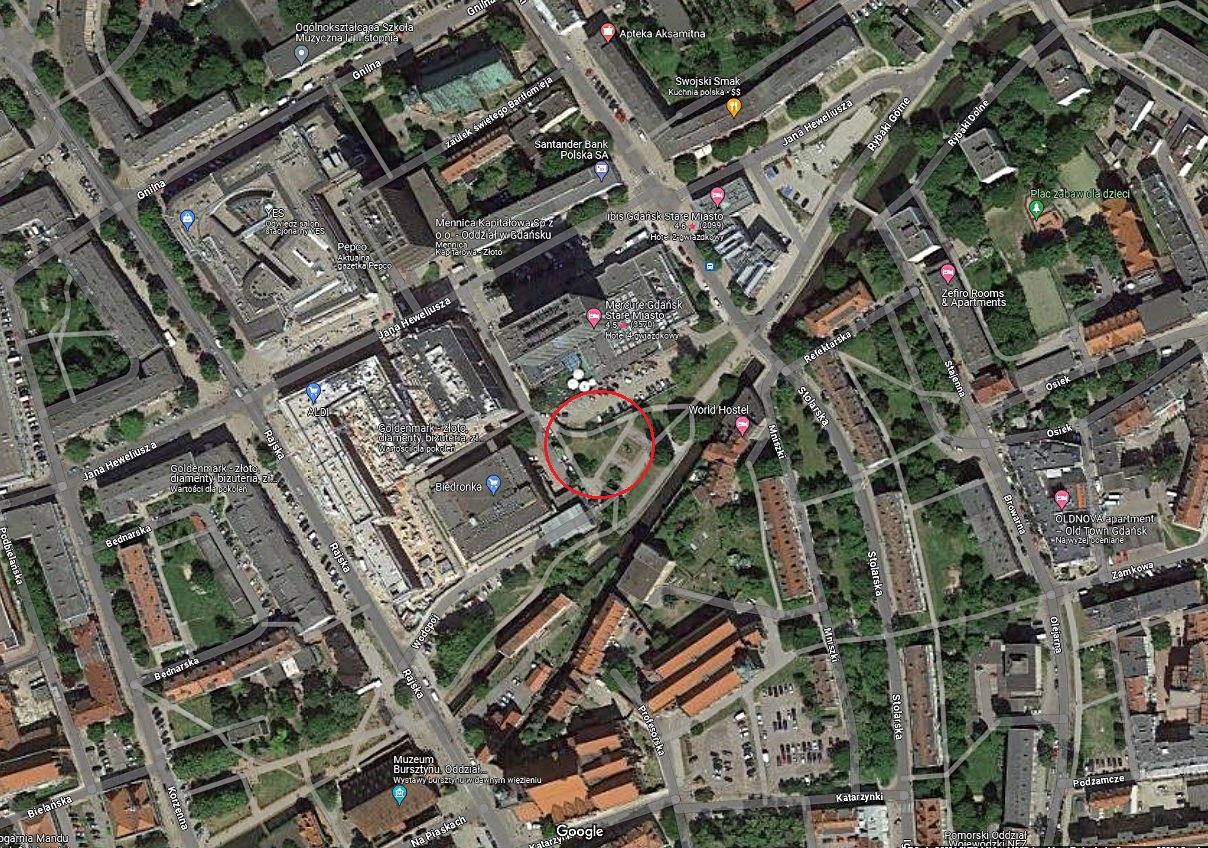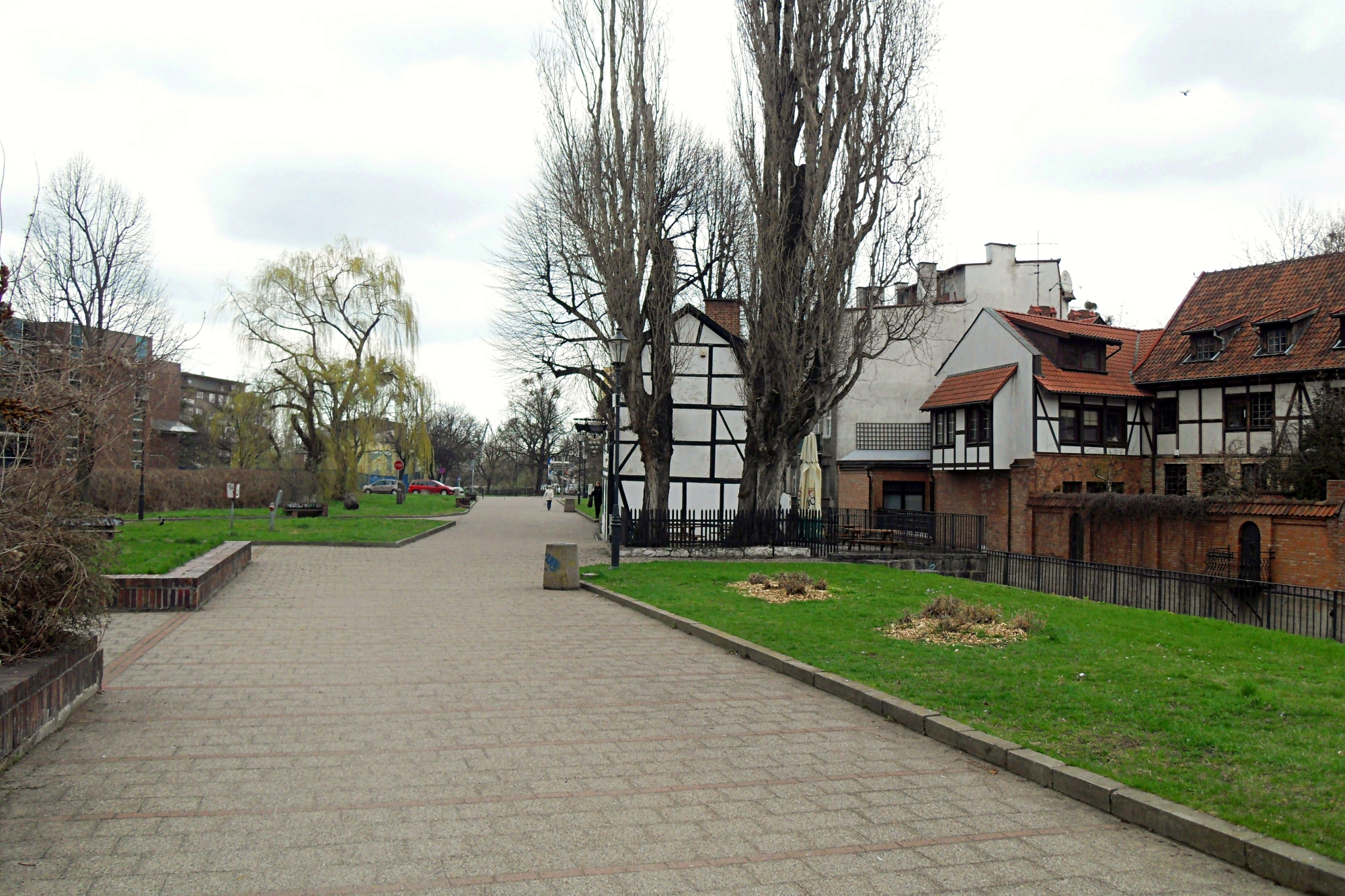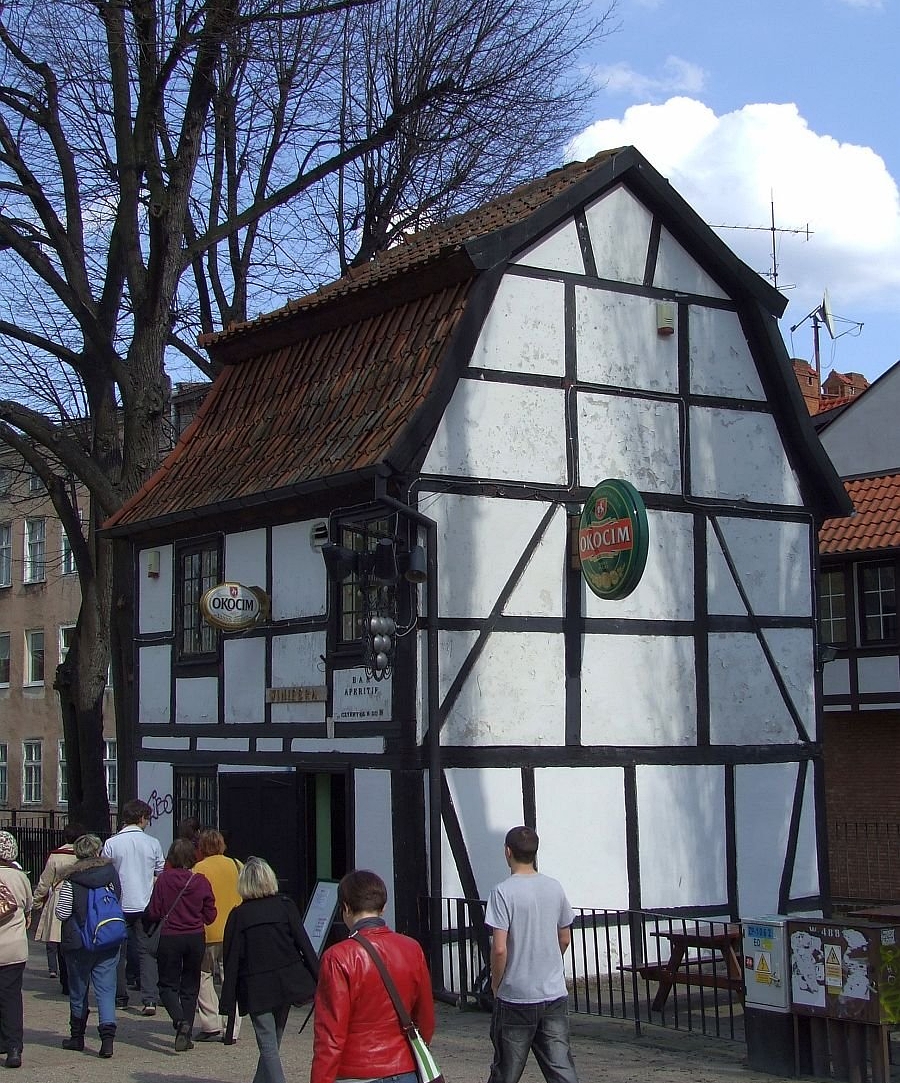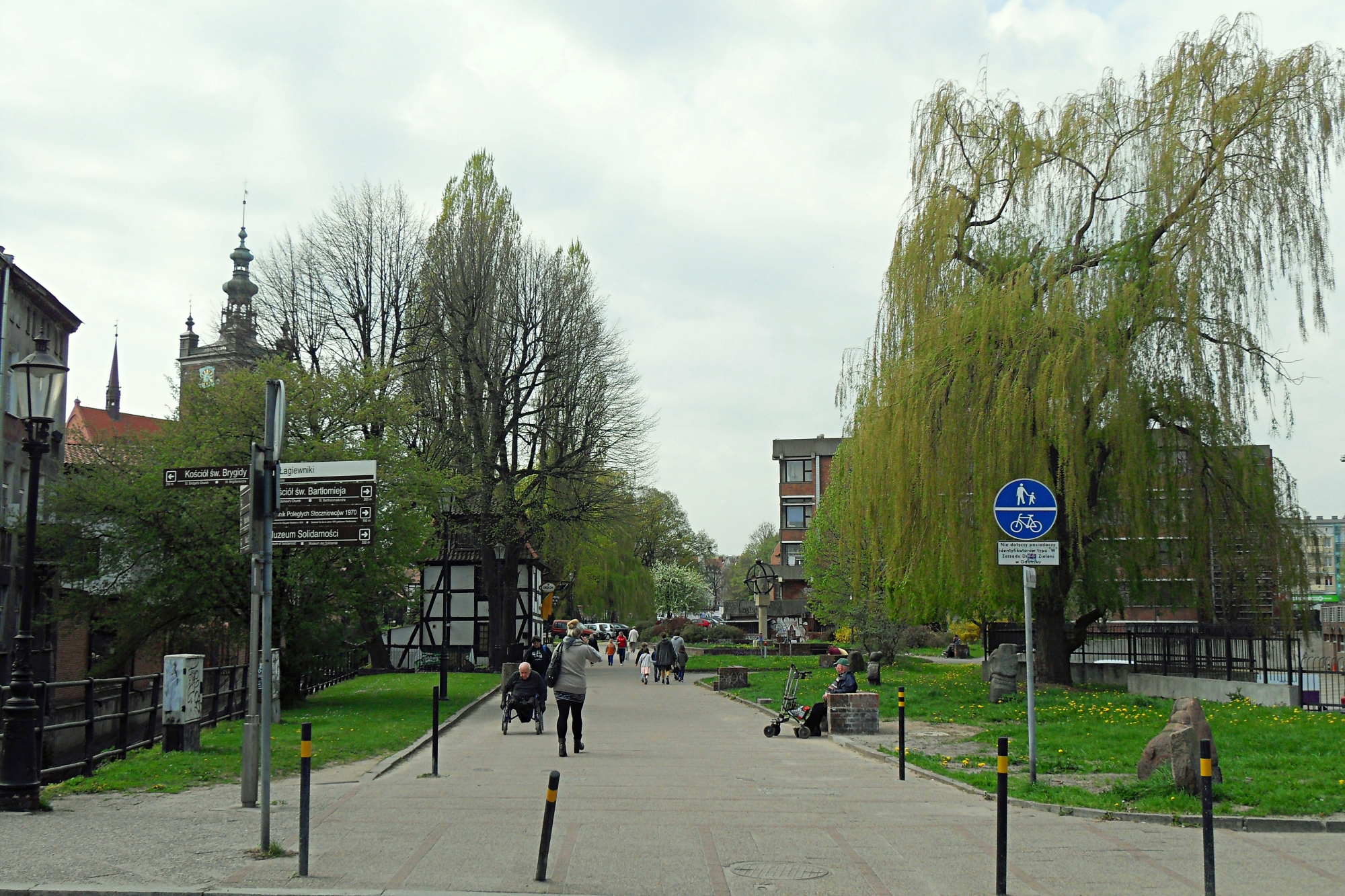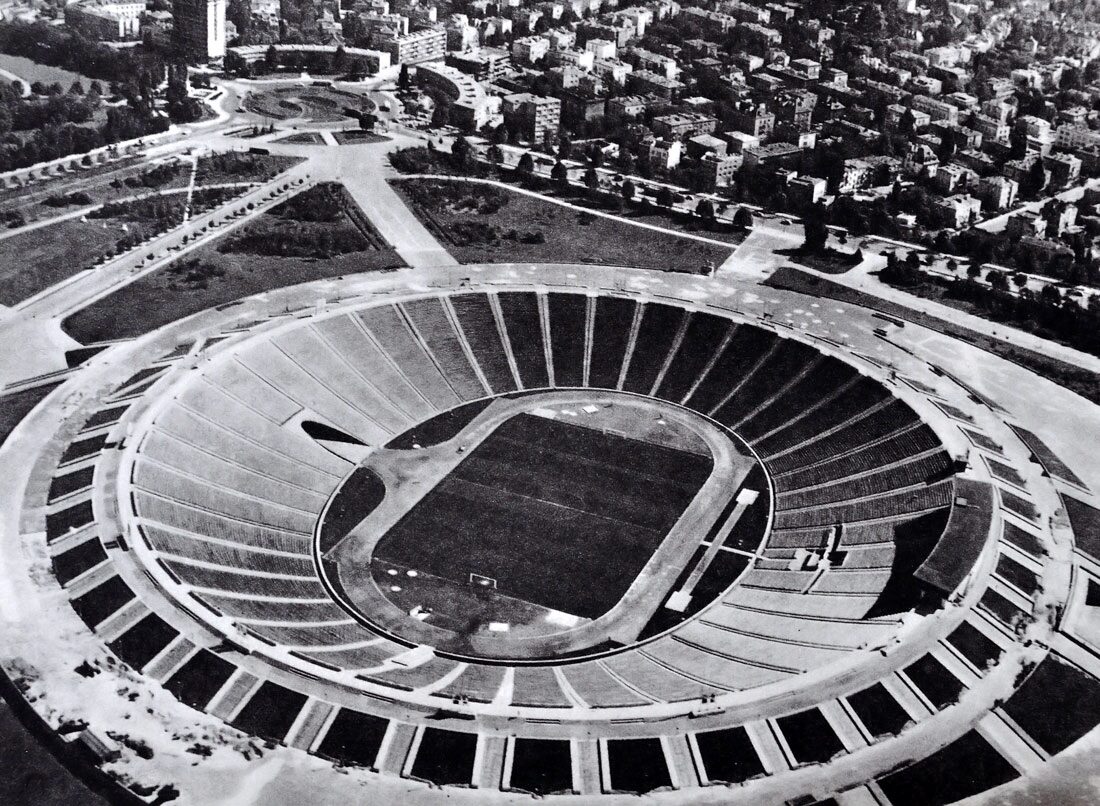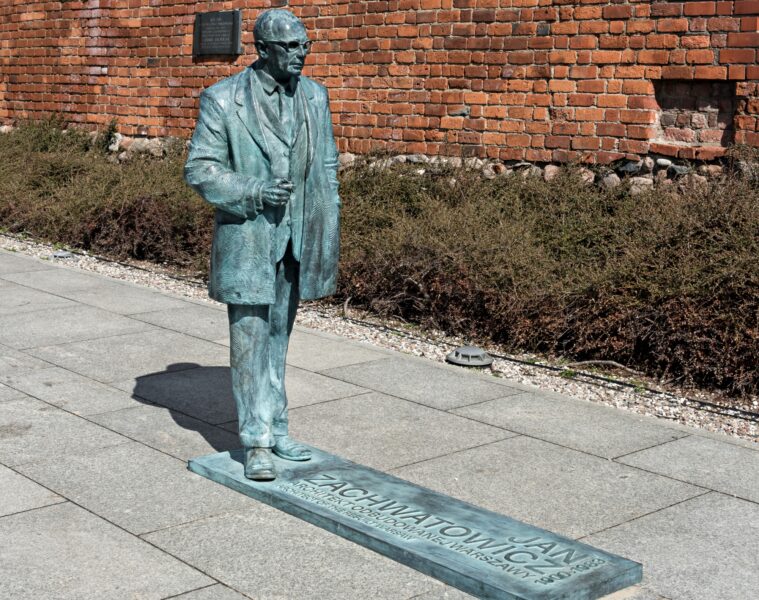The square in Wodopój Street in Gdańsk is about to undergo a colossal change. A peculiar building will soon be erected there: its lower floors will be stylised as bourgeois townhouses, while the upper floors will be modern walls of glass, as in a typical contemporary building. The design for this synthesis of styles and masses was created under the strict guidelines of the former Pomeranian conservation officer. The concept was created by the Wolski Architekci studio from Sopot.
Today’s Wodopój Street is largely a pavement leading to a small square with a monument to John Hevelius, located by the Radunia Canal. Only one half-timbered building from the turn of the 18th and 19th centuries stands there, which used to be inhabited by the urban poor. Originally, the street was lined with dense buildings, most of which were destroyed during the Second World War, and the remnants were removed after 1945, leaving one small building. Over the years, it housed a restaurant and since 2021, the historic refurbished building has been the service point for the Restricted Access Zone.
The only surviving building on Wodopój Street. Photo Karol Stańczak/GZDiZ
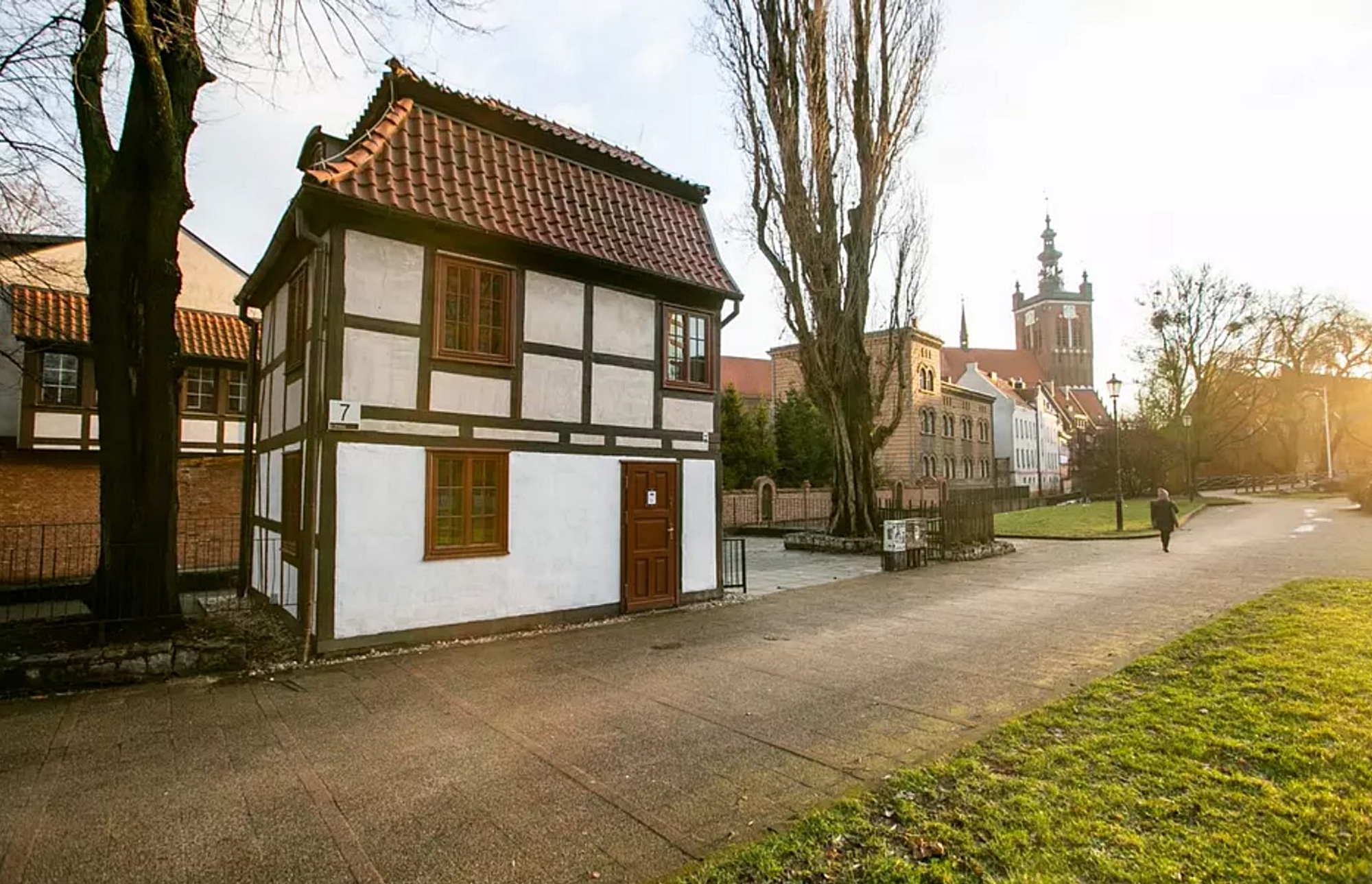
A small plot of land with a difficult trapezoidal shape is located between the modernist blocks of the NOT building and the Ibis hotel, on the one hand, and the ascetic facades of the urban buildings of the post-war period on the other. In March this year, developer Moderna applied for planning permission to build a 30-metre-long multi-family building with ground-floor services at this location. The new 9-storey building will contain 72 flats and four commercial units. The building will also have an underground car park. Planning began with an analysis of the conservation officer’s recommendations. Recreating the directions of the historical pedestrian routes imposed an additional division in the ground floor plan. An obvious decision was to open up the building to the neighbouring, charming Radunia Canal. The landscaping of the area required providing space for a centrally located monument to John Hevelius and small sculptural forms. The greenery only complements the surroundings, as is the case in intensively urbanised urban areas.
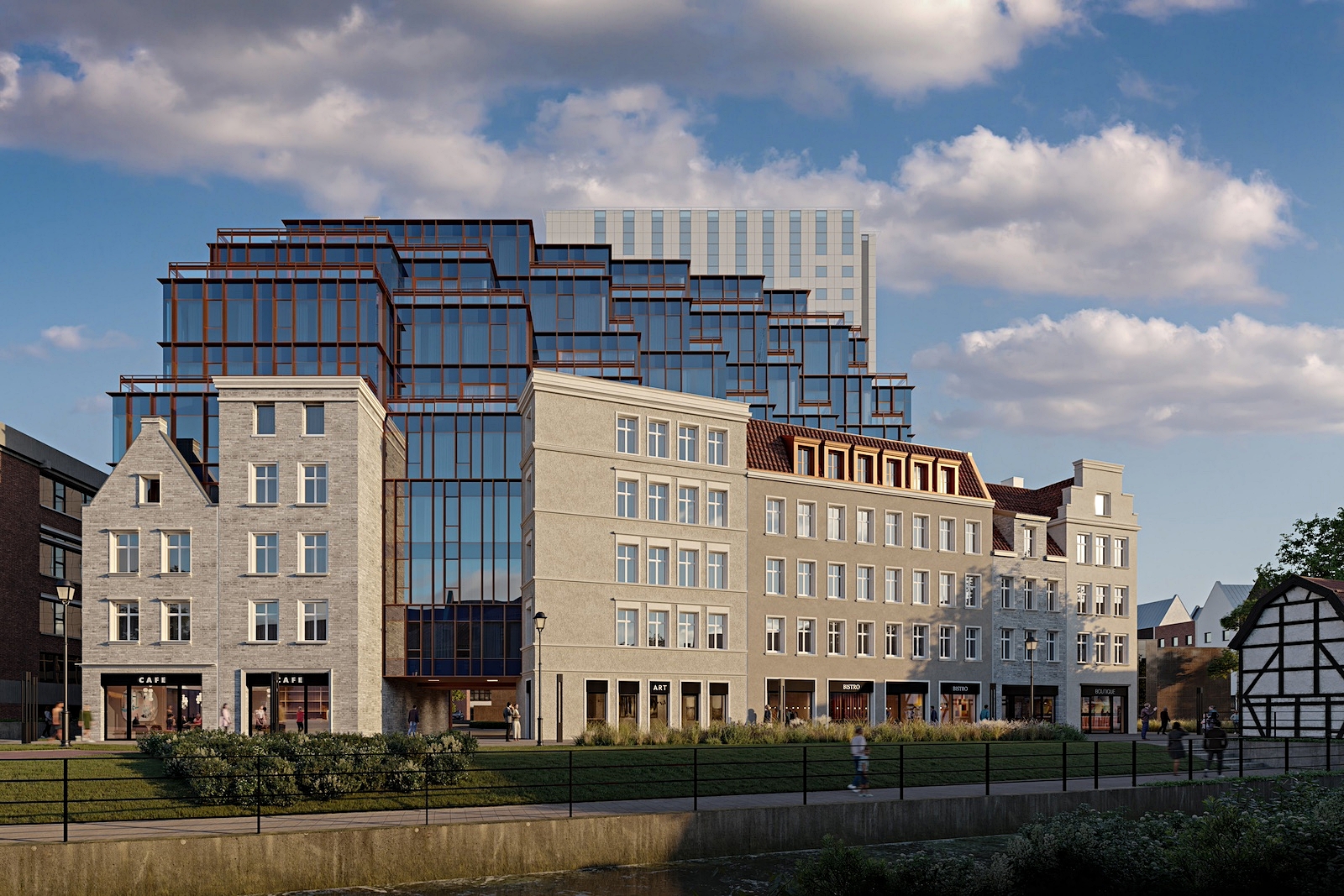
The lump of the designed building is very unusual, unprecedented in the Tricity. The first few floors are hidden behind a wall imitating the frontage of tenement houses, between which a glass connector is planned. Horizontal façades are decorated with inter-storey cornices, glyphs and window reveals, and attics carved in their profiles. The frontage created in this way corresponds to the monolithic mass of the NOT building, creating continuity and enclosing the quarter. Above them are cascading glass storeys with a very contemporary form. The massing is devoid of detail, enriched only by vertical profiles. Both the location of the project and the local development plan required the supervision of the then conservationist Igor Strzok. He was consulted and every detail of the new building was designed according to strict conservation guidelines. As part of this work, a concept was created that envisages the visual restoration of the former old city frontage from Rajska Street to Gate No. 1 of the Gdańsk Shipyard, i.e. Rybaki Górne Street.
The developer has not yet set a start date for construction.
Source: Moderna, trojmiasto.pl
Read also: Gdansk | Tenement | Elevation | City | whiteMAD on Instagram

